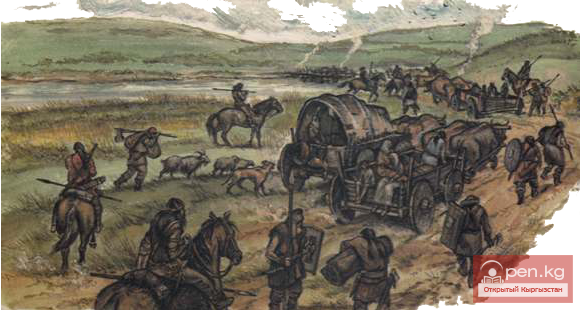
"Si-yu-chi" about the Kyrgyz
Protoichkiliks and Arka These accounts may refer to the separation of a certain part of the tribes of the right wing of Arka (the combination of the right and left wings) and the formation of a separate group of Kyrgyz, which could later form the core of the clan-tribal group of the Kyrgyz people known as ichkilik. Perhaps they were also mentioned in the "Majmu at-tavarikh" as a group of tribes called Bul(a)gachi. Incidentally, according to the same accounts provided by B. Soltonoev,















































